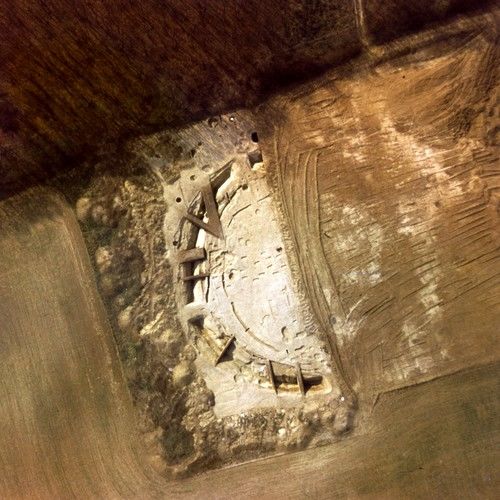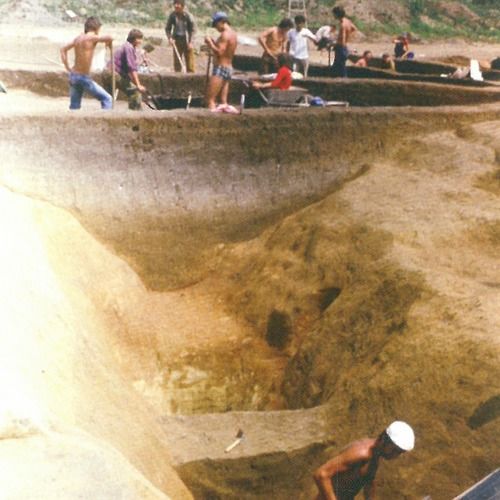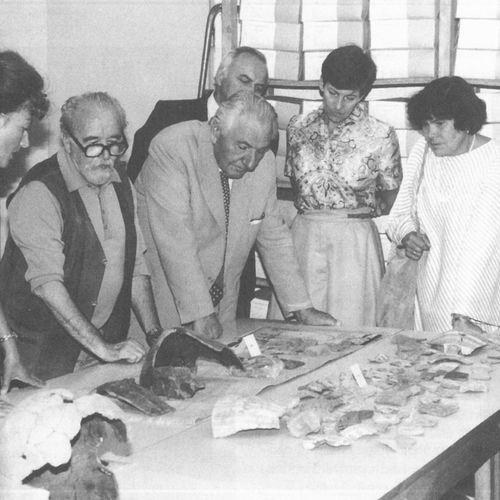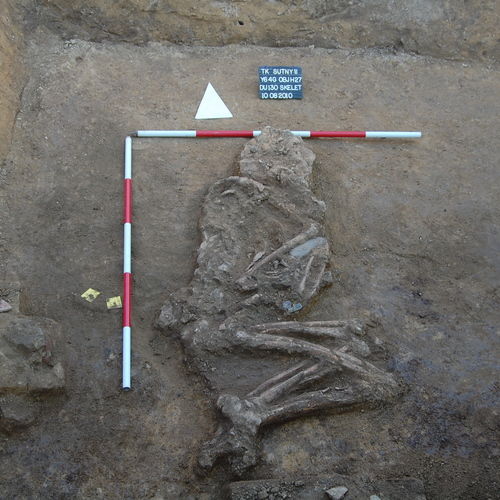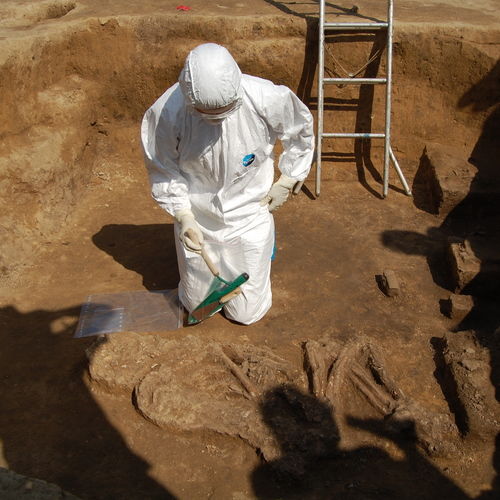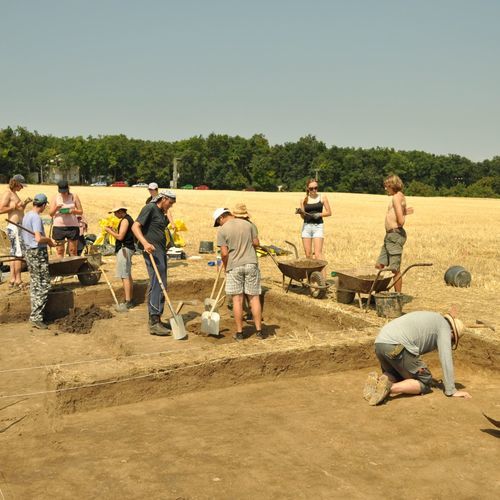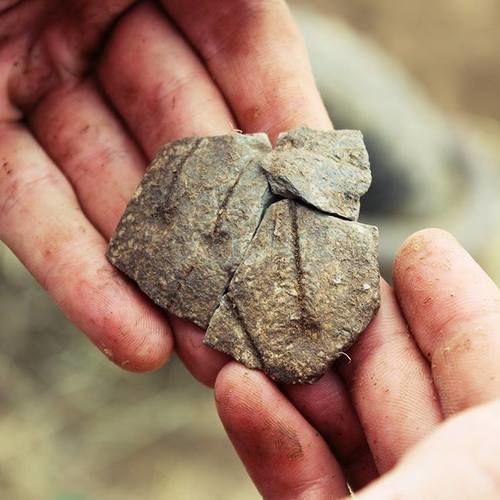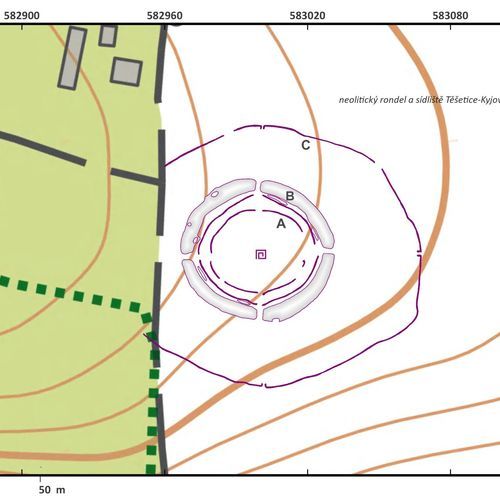Kyjovice, Znojmo District, South Moravian Region
Prehistoric settlement and Neolithic roundel in Těšetice-Kyjovice
(5400–500 BC)
Těšetice-Kyjovice is one of the most important sites in Moravian prehistory. Due to the discovery of a roundel — a circular ditched enclosure — the site has become internationally known as it was the first find of this type discovered in Central Europe. Systematic excavations on the border of the cadastral areas of Těšetice and Kyjovice started in 1956 and are still ongoing. The oldest remains of a settlement can be attributed to the Linear Pottery culture (Sutny site) while later traces stem from the Stroked Pottery culture and most extensively from the Moravian Painted Ware culture, which means from the time of the construction of the roundel. The settlement continued in the Eneolithic; a fascinating chamber tomb of a high-ranking member of the Bell Beaker culture was uncovered there in 2010. The nearby Vinohrady site yielded a cemetery of the Early Bronze Age Únětice culture and a settlement and cemetery of the Horákov culture from the Early Iron Age (Hallstatt period).
References: Dočkalová – Koštuřík 1996; Kazdová 1996; Lorencová 1975-1976; Podborský 1981; Weber 1985.
Navigation point: N 48°53'55.6", E 16°07'55.7" (at the archaeological base camp).
Map notes: A – inner palisade; B – V-shaped ditch interrupted by four entrances facing the cardinal directions; C – outer palisade. Map symbols are available in the Downloads section.
Selected fulltext articles and reports for further reading. Complete bibliographical records are available in the Downloads section as the List of publications.


